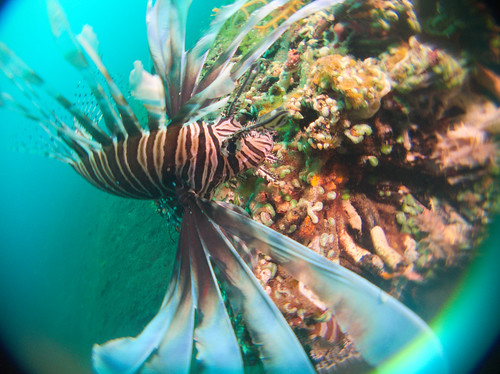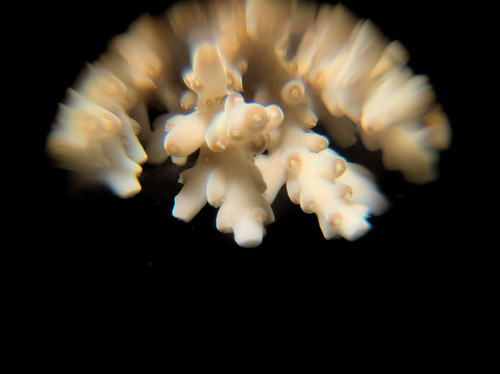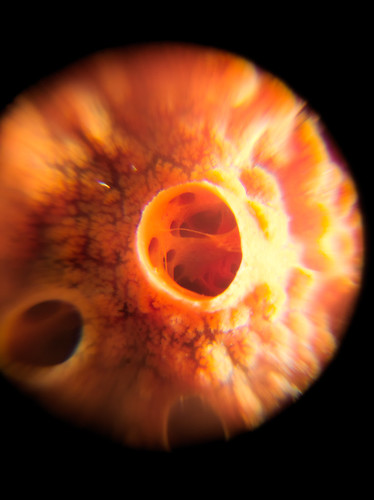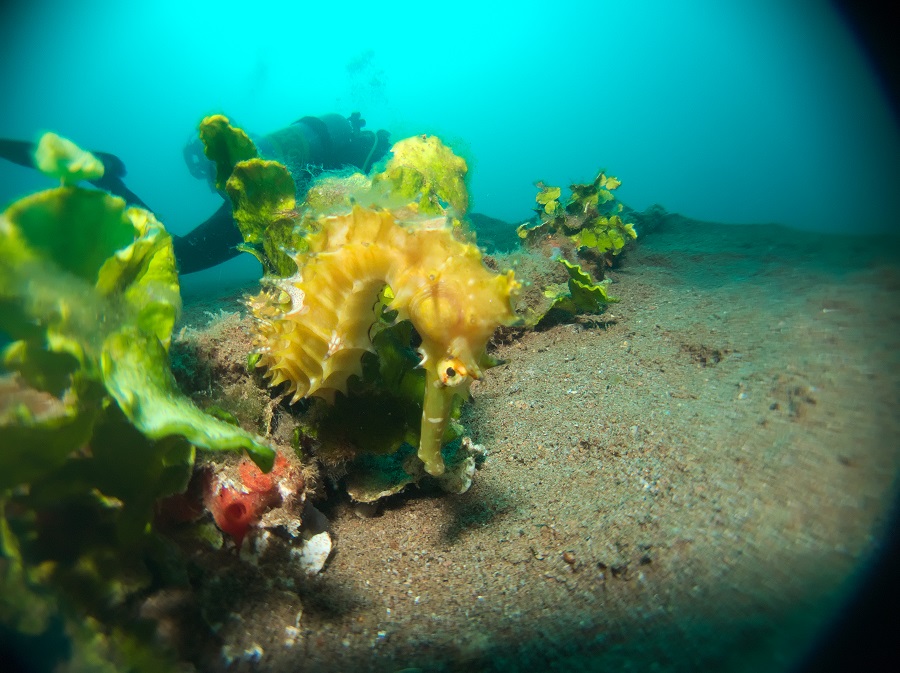Seeing through a Bug Eye
I bought myself a new lens! It’s the Inon “Bug Eye” lens, a wide-angle wet-lens, with a 0 mm minimum focus distance. Wet-lens means that it is attached to the front of the camera housing’s lens-port; that’s often an advantage since its possible to take it off during a dive.
This lens has been around for a while, and I have had my eye on this bug-eye for a while (pun intended, though not very good). It allows the underwater photographer to get shots of small marine animals like sea slugs (“macro”), while at the same time getting a wide view of the scene in front of him into the image (“wide angle”). A macro and wide-angle lens in one! This sounded interesting. At only about 200 US$, the lens is cheap enough for an experiment.
The unique photographic opportunities of combining wide-angle and macro interested me for the sake of aesthetics; the combination should also give me the opportunity to show a small animal (sea slug), and the specific marine environment it lives in (coral rubble, for instance). Such images could be quite instructive from a nature documentarists point of view!
Test Dives
I tested the lens during 2 dives so far: The Inon webpage states that, when using it with an Olympus E-M1, the lens is compatible with the Olympus M.ZUIKO DIGITAL ED 12-50mm F3.5-6.3 EZ lens – which I don’t own. Instead, I have the 17-42 mm kit lens and the 60 mm macro lens; the latter lens I really love for shooting small and very stuff. I decided to try the bug eye with both of these lenses.
17-42 mm
With the 17-42 mm kit lens, I had to zoom in all the way to 42 mm, and then there was still a vignette visible at the edges of the image. The mount of the lens is designed so that the user can change the distance of the base of the lens to the housing port; no distance I tried eliminated the vignette; I left the base as close to the port’s glass as possible, as recommended by Inon.
The lens was not easy to use. The camera’s autofocus works with it, but not too well – it tends to travel or mis-focus. A lot of images I got where out of focus, when inspected post-dive on my computer screen. Even when in focus, the images where not as sharp as they normally are with the “mother” lens only. In all cases were the images distorted on the periphery. A high f-stop is a must. Still, some images came out quite interesting.
60 mm
When using the bug eye lens with the 60 mm macro lens, it completely turned into a “crazy effects” lens. The focused region of the images was restricted to the very center. Distortion and chromatic aberrations were abound. These shots looked trippy, but not like images documenting nature anymore. Artsy, yes, a way of showing people the life of animals underwater, mostly no.
In conclusion, this lens is not easy to use. Distortion comes with using such an extreme lens like bruises come with a game of rugby. I’ll nevertheless will keep bug-eying.




